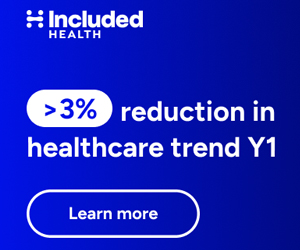

By HUGH HARVEY, MBBS and SHAH ISLAM, MBBS
AI in medical imaging entered the consciousness of radiologists just a few years ago, notably peaking in 2016 when Geoffrey Hinton declared radiologists’ time was up, swiftly followed by the first AI startups booking exhibiting booths at RSNA. Three years on, the sheer number and scale of AI-focussed offerings has gathered significant pace, so much so that this year a decision was made by the RSNA organising committee to move the ever-growing AI showcase to a new space located in the lower level of the North Hall. In some ways it made sense to offer a larger, dedicated show hall to this expanding field, and in others, not so much. With so many startups, wiggle room for booths was always going to be an issue, however integration of AI into the workflow was supposed to be a key theme this year, made distinctly futile by this purposeful and needless segregation.
By moving the location, the show hall for AI startups was made more difficult to find, with many vendors verbalising how their natural booth footfall was not as substantial as last year when AI was upstairs next to the big-boy OEM players. One witty critic quipped that the only way to find it was to ‘follow the smell of burning VC money, down to the basement’. Indeed, at a conference where the average step count for the week can easily hit 30 miles or over, adding in an extra few minutes walk may well have put some of the less fleet-of-foot off. Several startup CEOs told us that the clientele arriving at their booths were the dedicated few, firming up existing deals, rather than new potential customers seeking a glimpse of a utopian future. At a time when startups are desperate for traction, this could have a disastrous knock-on effect on this as-yet nascent industry.
It wasn’t just the added distance that caused concern, however. By placing the entire startup ecosystem in an underground bunker there was an overwhelming feeling that the RSNA conference had somehow buried the AI startups alive in an open grave. There were certainly a couple of tombstones on the show floor — wide open gaps where larger booths should have been, scaled back by companies double-checking their diminishing VC-funded runway. Zombie copycat booths from South Korea and China had also appeared, and to top it off, the very first booth you came across was none other than Deep Radiology, a company so ineptly marketed and indescribably mysterious, that entering the show hall felt like you’d entered some sort of twilight zone for AI, rather than the sparky, buzzing and upbeat showcase it was last year. It should now be clear to everyone who attended that Gartner’s hype curve has well and truly been swung, and we are swiftly heading into deep disillusionment.
Continue reading…





















